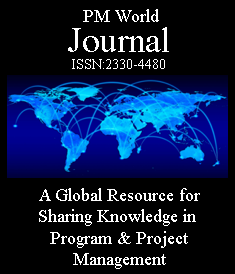in Multi-Train Sulfur Recovery Units
of Jafurah Project
FEATURED PAPER
By Nasser Mohammed Altamimi
Kingdom of Saudi Arabia
Abstract
This paper presents a comparative study of control strategies applied in multi-train Sulfur Recovery Units (SRUs) that share a common acid gas header. The focus is on the practical implementation and operational behavior of fixed flow control and cascaded pressure control, particularly in systems with three or more SRU trains. The study outlines configurations where the majority of trains operate under flow control while one train is assigned to cascaded pressure control to manage header pressure fluctuations. Detailed procedures for tuning, Distributed Control System (DCS) integration, and system response during normal and upset conditions are provided. The paper also examines the two-out-of-three (2oo3) method as an alternative strategy, highlighting its structure, reliability advantages, and its impact on system performance. The study emphasizes the importance of adopting flexible control architectures, precise loop tuning, and appropriate sensor placement to maintain system stability and ensure continuous, reliable operation in multi-train SRU environments.
Keywords: Acid Gas, Control, Methods, Sulfur Recovery Unit, Setpoints, Flow, Cascaded Pressure, Instrumentation, Gas Plant, Header, Train, Valves,
- Introduction
Sulfur recovery unit is a critical component in gas processing plants to convert hydrogen sulfide-rich acid gas streams into elemental sulfur ensuring environmental compliance and efficient gas treatment. The Claus process is the primary industrial method used for this purpose, and its effective operation relies heavily on stable control strategies within Sulphur Recovery Units (SRUs). Maintaining header pressure stability and effective load distribution across multiple SRU trains is essential to ensure process reliability. This paper evaluates flow and pressure–flow cascade control strategies across systems with three or more trains, emphasizing the operational implications and control requirements in both standard and expanded multi-train configurations with the objective of enhancing process stability, system reliability, and operational consistency.
More…
To read entire paper, click here
How to cite this paper: Altamimi, N. M. (2025). Flow vs. Cascaded Pressure Control in Multi-Train Sulfur Recovery Units of Jafurah Project, PM World Journal, Vol. XIV, Issue XI, November. Available online at https://pmworldlibrary.net/wp-content/uploads/2025/11/pmwj158-Nov2025-Altamimi-Flow-vs-Cascaded-Pressure-Control-in-Multi-Train-Sulfur-Recovery.pdf
About the Author

Nasser Altamimi
Kingdom of Saudi Arabia
![]()
Nasser Altamimi is an Associate Engineer in the Jafurah Gas Project, specializing in control and instrumentation systems. He is part of the Control and Instrumentation team and serves as the champion of the Central Control Building and the Process Interface Building for the Sulfur Recovery Unit Train. Nasser holds a Bachelor’s degree in Electrical Engineering and a Master’s of science in Electrical Engineering with a focus on Control Systems and Instrumentation from Rochester Institute of Technology, graduating in 2019. He has five years of industry experience, starting his career as an Energy Efficiency Engineer at the Ministry of Commerce before joining the Jafurah Gas Project in 2022. He holds NEBOSH and OSHA certifications and is a member of the Saudi Council of Engineers.
He can be contacted at natamimi1@gmail.com









